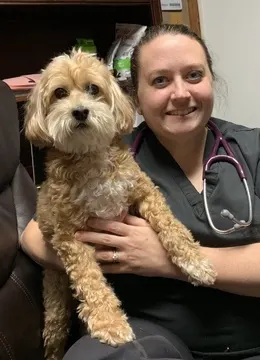 We know our beautiful Chihuahuas have big expressive eyes. But sometimes having those big eyes can come with extra health issues. Keratoconjunctivitis Sicca is one of those possible health problems that you should be aware of. In layman’s terms, it is Dry Eyes. People can get this too by the way.
We know our beautiful Chihuahuas have big expressive eyes. But sometimes having those big eyes can come with extra health issues. Keratoconjunctivitis Sicca is one of those possible health problems that you should be aware of. In layman’s terms, it is Dry Eyes. People can get this too by the way.
THE SYMPTOMS
When you hear the doggy-door squeak in the kitchen, you reach past the half-eaten bag of popcorn and snatch up a tissue. You quickly dab at your eyes with one hand while pausing the movie with the other. After all, you tell yourself—he likes this movie, too.
A second later, your dog’s furry little head pokes out of the kitchen door and he is winking at you. You are so surprised that you laugh out loud, and then, just as quickly, stop when it occurs to you that your dog doesn’t know how to wink.
He trots over to you still winking and you get down on one knee. You ask him in a soothing voice what is wrong with his eye, while at the same time, cupping his head with one hand and gently opening the squinting eye with the other.
The white of your dog’s eye has turned a pinkish-red and unlike the other eye, the pupil is now dull and cloudy looking. Your first thought had been that a breeze had simply blown some debris in his eye, but one glance makes you instinctively reach for your phone. Fortunately, you have the Vet on speed dial.
THE DIAGNOSIS
Within the hour, your Vet is examining your dog and then glances up at you and tells you that your dog’s problem is a little more serious than just dirt in his eye. He is suffering from Keratoconjunctivitis Sicca.
When your Vet sees the look of concern on your face grow worse, she quickly apologizes and with a half-smile, she tells you that Keratoconjunctivitis Sicca is just the medical term for Dry-Eye Syndrome.
“No worries”, the Vet quickly assures you. “It’s treatable.”
For the first time since all this started, you feel a sensation of relief wash over your body which is replaced by curiosity and questions. Such as:

What is Keratoconjunctivitis Sicca?
Keratoconjunctivitis Sicca is a medical term for Dry-Eye Syndrome. To the untrained eye, the eye shows symptoms of trying to expel some debris that may have blown into the eye, but eyes suffering from Dry Eye Syndrome are not just red and cloudy because they are trying to wash away some foreign object. The eye looks that way because it is no longer producing a sufficient amount of tears to protect the eye.
Unlike a simple eye rinse, if the suffering eye is not medically treated, the eye can become infected and worse.
Is It Normal For Dogs to Suffer From Dry-Eye Syndrome?
While human beings can suffer from this issue, dogs, cats, and other animals can contract it, as well.
In fact, some breeds of dogs seem to be more prone to suffer from it than others.
The dogs that top the list are: Shih Tzus, Samoyeds, Pugs, Pekingese, Lhasa apsos, English bulldogs, Bloodhounds, some of the Spaniel breeds, and many of the Terrier breeds to name just a few.
So, what are some of the causes of lowered tear production which lead to Dry-Eye Syndrome in dogs?
While there are many causes, some of the more common are
- Your dog developing an allergy
- Hypothyroidism
- Canine Distemper
- An immune-mediated disease that damages the tear-producing gland.
Because several of these causes have to do with your dog’s internal health, it is highly recommended that you let your dog’s health care professional perform a complete evaluation to determine the exact cause so that a relapse of the condition is minimized.

So, now that you know what the problem is, how is it treated?
Technically, the cure for Dry-Eye has two parts which your Vet will be correcting at the same time. The treatment course is to
- Get tear production back up to normal level
- Regenerate the “tear film” which is a lubricating layer of tears that coats all healthy eyes which the normal production of tears helps maintain.
Think of it like this—the engine in your car is your dog’s eye, and the oil in your car is your dog’s tears. The oil’s job is to keep the engine nice and lubricated so that it doesn’t get damaged. If for some reason the oil stops coating the engine, the engine is in bad trouble. It’s a similar relationship with your dog’s tears and eyes. (As well as in your own eyes.)
At the time of this writing, the two most commonly used medications to resume natural tear production Vets use are cyclosporine and tacrolimus.
These drugs are very safe and easy to place into the dog’s eye. While this application is usually done once or twice a day your dog’s Vet will provide you with detailed instructions on how best to administer the medication to your dog.
In addition to the above medications, your Vet may also prescribe an antibiotic and/or an anti-inflammatory regimen to fight and/or protect the eye from infection while the “tear film” is being regenerated.
If you want to help even more, and your Vet agrees, you can also assist with your dog’s healing by gently washing your dog’s eye several times a day with a warm, wet, washcloth.
But don’t forget–the word is “gently”.
For most of us, our dogs aren’t just pets, they’re family members, so by following your Vet’s directions and utilizing the loving care you know so well, it won’t be long before your four-legged family member is once again, both Bright-Eyed and Bushy-Tailed.
This means that the next time you are in a mood for one of those old sentimental movies, there won’t be any Dry-Eye’s in the house.
Be sure to check out other chihuahua health problems too!


Dr. Sara Ochoa
DVM
This article has been fact-checked and approved by Dr. Sara Ochoa DVM. You can read more about her on our About page.

Janet E. Wagenseller
Saturday 7th of April 2018
Do you have any information on chi's eyes that are tearing...
Cathy
Saturday 7th of April 2018
No Janet but that's a great idea for an article I will write. I do know as a groomer we used to use Angel Eyes under their eyes to get rid of the stains but that doesn't necessarily stop the tearing.
Debra Newton
Thursday 24th of August 2017
Here is article about Colloidal Silver for dogs. For eyes, skin, ears, illness. http://www.dogsnaturallymagazine.com/five-immune-boosting-uses-of-colloidal-silver/
Cathy
Monday 28th of August 2017
Thanks Debra!
Debra Newton
Monday 21st of August 2017
FYI, GenTeal Tears is a good liquid drop eye lubricant found at most drug stores. I have been using it for two years for my mini pin, who has an autoimmune dry eye condition. doing lots of research over the years, I have found many articles stating Krill oil, will help with human and dog dry eye. http://www.dogsnaturallymagazine.com/astaxanthin-for-dogs/
I also have found lutin, eye bright, and billberry herbals, to be very supportive. Dr. Mercola, makes a eye formula, and krill oilI, I have used both products and am pleased with them. There are many other products I also have tried from them. Dr. Beck also has many videos on animal illness, disease, treatments, problems, good info.
The biggest improvement I have seen in my dogs eye disease is, no wheat. If she has wheat in any treats, her eyes get inflamed and severe dry. They will even get infections starting. I use a mix of Colloidal Silver 1/3 with 2/3 distilled water. I use for eye infections, ear infections, any infection! That is very strange, that an eye disease, gets worse with wheat! http://www.dogsnaturallymagazine.com/why-your-dogs-allergy-treatment-doesnt-work/
Cathy
Monday 21st of August 2017
Thanks for the info Debra!